Heart of Neolithic Orkney consists of a group of Neolithic monuments, situated on Mainland Orkney. The UNESCO World Heritage Heart of Neolithic Orkney includes: The Standing Stones of Stenness, the Ring of Brodgar, Maeshowe and Skara Brae. The Standing Stones of Stenness date from at least 3000 BC. Only 4 stones of the Standing Stones of Stenness have survived. The Ring of Brodgar was erected between 2500 and 2000 BC. Only 36 stones of the Ring of Brodgar have survived. Maeshowe is a passage grave and dates from around 2800 BC, it is one of the finest chambered tombs in north-west Europe. The central chamber of Maeshowe is illuminated by the winter solstice, similar to Newgrange. In the 12th century, Vikings broke into Maeshowe and engraved runes onto the stone walls of the main chamber. Maeshowe was built earlier than Stonehenge and the pyramids of Egypt. The people who built Maeshowe lived in settlements like Skara Brae. Skara Brae was inhabited between 3100 and 2500 BC. The Neolithic settlement of Skara Brae was inhabited long before the Egyptian pyramids were built and many centuries before the construction began at Stonehenge. Skara Brae was continuously inhabited for some 600 years. Skara Brae is one of the first known farming villages in Great-Britain and the best preserved Neolithic village in the northern part of Europe. Heart of Neolithic Orkney gained the status as a UNESCO World Heritage in 1999. World Heritage Art: Standing Stones of Stenness
www.werelderfgoedfotos.nl © Copyright World Heritage Photos

The Heart of Neolithic Orkney: The Neolithic settlement of Skara Brae is situated on the Bay of Skaill, on the west coast of Mainland Orkney, the largest of the Orkney Islands. Skara Brae is the best preserved and most complete Neolithic village in Northern Europe. The Heart of Neolithic Orkney consists of four Neolithic monuments on the Mainland of the Orkney Islands. The Heart of Neolithic Orkney was inscribed on the UNESCO World Heritage List in 1999.
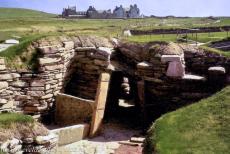
The Heart of Neolithic Orkney: The Neolithic settlement of Skara Brae is situated on the Bay of Skaill, on the west coast of Mainland Orkney, the largest of the Orkney Islands. Skara Brae is the best preserved and most complete Neolithic village in Northern Europe. The Heart of Neolithic Orkney consists of four Neolithic monuments on the Mainland of the Orkney Islands. The Heart of Neolithic Orkney was inscribed on the UNESCO World Heritage List in 1999.
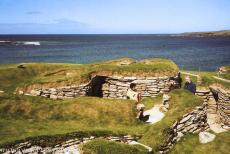
Heart of Neolithic Orkney: The stone-built Neolithic settlement of Skara Brae lies on Mainland Orkney, the largest island of the Orkneys. The settlement was inhabited between 3100 - 2500 BC. Skara Brae was inhabited before the Egyptian pyramids were built and centuries before the construction started at Stonehenge. The inhabitants of Skara Brae were farmers, hunters and fisherman. Skara Brae is part of the UNESCO World Heritage Site: Heart of Neolithic Orkney.
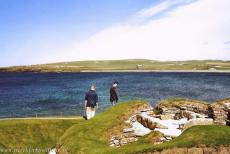
Heart of Neolithic Orkney: In the winter of 1850, a heavy storm stripped the grass of a dune and the ancient settlement of Skara Brae was uncovered. The settlement was continuously inhabited for some 600 years, from about 3100 BC - 2500 BC. Skara Brae is one of the first known farming villages in Britain. The buildings of the Neolithic settlement of Skara Brae were excavated during the 1860s.
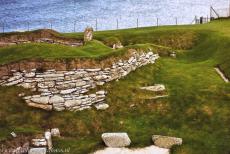
Heart of Neolithic Orkney: Skara Brae is one of the best preserved group of prehistoric houses in Northern Europe. Skara Brae had two phases of construction and inhabitation, beneath Skara Brae there are the remains of an earlier village. During archaeological excavations in the early 20th century, several artifacts were found in the settlement, such as pottery, tools and jewelry, but no weapons have been found.
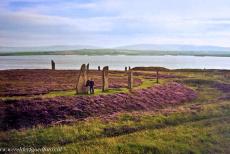
The Ring of Brodgar is a Neolithic henge and stone circle northeast of Strommness on Mainland Orkney. The stone circle is one of the Neolithic monuments of the UNESCO World Heritage Site: Heart of Neolithic Orkney. The World Heritage consists of four prehistoric monuments: Skara Brae, Maeshowe, the Standing Stones of Stenness and the Ring of Brodgar. The Ring of Brodgar is the third largest stone circle in the British Islands.
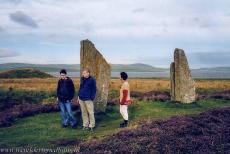
Heart of Neolithic Orkney: The Ring of Brodgar is situated on Mainland Orkney. The stone circle was erected between 2500 BC - 2000 BC. Nowadays, only 36 stones have survived, including the nearby Comet Stone. The ditch around the Ring of Brodgar is three metres deep and ten metres wide. The construction is estimated to have involved 80,000 man-hours of work. Due to its unique location, the Ring of Brodgar is among the most mystical stone circles in Great-Britain.
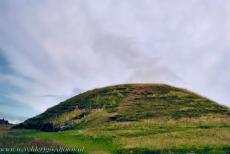
Heart of Neolithic Orkney: The grass mound of Maeshowe hides passages and grave chambers. The passage tomb Maeshowe was built between 3000-28000 BC. Maeshowe is one of the finest chambered tombs in north-west Europe. It was built earlier than Stonehenge and the pyramids of Egypt. Those who built Maeshowe lived in settlements such as Skara Brae. The passage tomb Maeshowe is approximately 7 metres high and 35 metres in diameter.

The passage into the chambered tomb of Maeshowe. The main chamber is surrounded by three smaller side chambers. Viking warriors broke into Maeshowe in the 12th century, they engraved some thirty runic inscriptions onto the stone walls of the main chamber. Maeshowe is a passage grave and chambered cairn. Maeshowe is one of the great monuments of the Heart of Neolithic Orkney, along with the Ring of Brodgar, the Standing Stones of Stenness and Skara Brae.
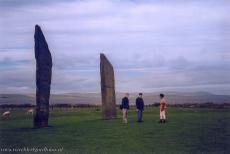
Heart of Neolithic Orkney: The Standing Stones of Stenness date from at least 3000 BC. Only 4 stones of the Standing Stones of Stenness have survived. The Neolithic monument is located on Mainland Orkney. The Standing Stones of Stenness is probably the oldest henge in the British Isles, the Neolithic monument is hundreds of years older than Stonehenge. The Standing Stones of Stenness are part of the UNESCO World Heritage: Heart of Neolithic Orkney.
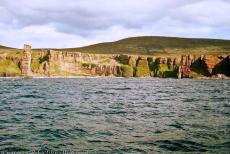
The Old Man of Hoy is located on the Island of Hoy, one of the Orkney Islands. The Old man of Hoy is a 137 metres high sea stack, the rock is probably less than 400 years old. The sea stack is formed from red sandstone and is one of the tallest sea stacks in the British Isles, the rock was first climbed in 1966. The sea stack is one of the most famous landmarks of the Orkney Islands. The Old Man of Hoy can be viewed from the ferry from Scrabster to Stromness.
